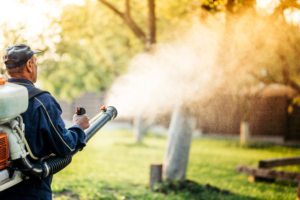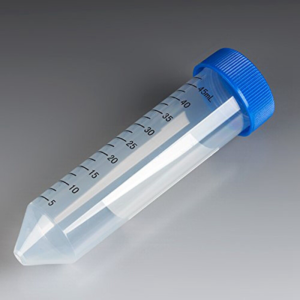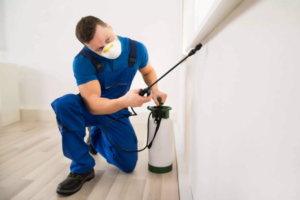Movers Meridian ID are responsible for ensuring that furniture, boxes, and parcels arrive at their destination. They are also a well-respected industry. If you’re considering a career in this field, it’s important to perform your research before diving in.

Ensure that your movers are properly licensed and insured. Most reputable companies will list these credentials on their website or provide them upon request.
A mover is responsible for the transportation of goods and furniture from one place to another. This includes loading the items onto a truck or van, transporting them to the destination, and unloading them. This is a physical job that requires a lot of strength and stamina. It is important to choose a company that has good ratings and is licensed. You should also ask about their insurance coverage. Some companies provide insurance for damage caused during transit, while others only offer basic liability coverage.
A moving company is an agency that offers a full range of services for residential moves. These services can include packing, unpacking, and storage. Some companies also offer a self service option that allows customers to pack and transport their own belongings. This type of move is typically cheaper than hiring a full-service mover.
Movers are required to have a license from the state in which they operate. The mover’s license number is usually displayed on their truck and paperwork. The state licensing requirements vary, but they generally require the mover to obtain certifications for both intrastate and interstate movements.
There are a variety of items that movers cannot move, such as hazardous materials and perishables. In addition, movers may refuse to transport certain types of furniture. They may also charge additional fees for heavy items like treadmills and ellipticals. These items are often too large to fit through doorways and must be transported using a lift or crane.
If the mover is unable to transport your shipment on the date agreed upon with the customer, they will notify you. The notification will include the reason for the delay and the new delivery date. You should always keep a copy of this document for your records.
The Surface Transportation Board (STB) regulates the transportation of household goods by motor carriers. However, this regulation only applies to interstate shipments and does not apply to intrastate moves. It is essential to check the STB’s website before choosing a moving company. The STB’s database contains the license numbers of all registered motor carriers. It is also possible to look up a particular mover’s complaint history and registration status.
They are a part of a team
A moving crew is a vital part of the relocation process. They’re responsible for packing and transporting household items, so it’s important to choose movers who are experienced and trained. A quality moving company will use a detailed training process and implement ongoing evaluations. This ensures that your movers are qualified to meet your business’s needs.
In addition to training, moving companies need to have the right tools and technology. For example, using software that enables you to analyze customer engagement can help you improve sales and identify areas of opportunity for your team. You can also use this information to make informed decisions about hiring new workers.
Hiring professional movers can save you time and money in the long run, especially when it comes to packing and moving bulky furniture. They have the expertise to move large, heavy items safely and efficiently and will get your belongings to their new home in good condition. Moreover, they will be able to stick to a schedule and provide you with a comprehensive service.
Another important benefit of a moving company is their insurance coverage, which acts as a safeguard against any damage to your possessions during the transition. It also gives you peace of mind, knowing that a professional is overseeing your move. Additionally, many movers offer specialty services that may not be available through other providers. For instance, some specialize in moving specialty goods such as gun safes, hot tubs, grandfather clocks, and artwork.
Full service movers offer a variety of additional services that can help you streamline the entire process. These services include packing, furniture disassembly, and storage. They will also provide packing materials such as boxes, tape, and bubble wrap. They can even help you install appliances, move your vehicle, and clean up after the move.
Moving is a complex process, and it’s hard to do on your own. It takes a lot of time, effort, and energy to pack up your belongings and move them. Hiring a professional moving company will make the entire experience much less stressful and easier for you.
They are a well-respected industry
In an industry where trust is essential, moving companies must work to earn their reputations. This is especially true in residential moves, where customers are trusting strangers with their most personal belongings. Fortunately, a few simple steps can help consumers find reputable movers. The first is to check online reviews. Look for comments about the company’s punctuality, condition of goods upon delivery, and customer service.
Another important step is to make sure that the moving company is licensed and insured. In addition, any truck that crosses state lines must be regulated by the Federal Motor Carrier Safety Administration. It is also a good idea to look for membership in an organization that requires a commitment to excellence, such as the Moving and Storage Conference (MSC) or the American Moving and Storage Association (AMSA).
A reputable mover will provide an estimate of charges based on the size of the shipment and its weight. This is called a “statement of estimated charges” or a “bill of lading.” The bill of lading will list the items being transported and their value. It is the responsibility of the consumer to read and understand this document before signing it.
Many movers offer packing services as part of the total moving price. This includes the cost of materials and the labor required to pack and unpack household items. The moving company will provide boxes, packing paper, and other packing materials to protect the items. It will also handle disassembly and reassembly of furniture and appliances. These services are an excellent option for people who want to avoid the hassle of moving themselves.
The movers’ work schedules vary depending on the season and availability of clients. Some movers work full-time, while others choose to work a flexible schedule. They can work during the week or on weekends, and may be required to meet certain deadlines. Many individuals enjoy the flexibility of this type of work because it allows them to spend time with family and friends outside of work.
It is also possible to do a DIY move with the right tools. However, this is a challenging and stressful process, which is why many people hire professional movers. These movers are trained to provide the best services possible, including delivering goods to their new locations in immaculate condition. They also use a variety of special tools and techniques to ensure that the move is as smooth as possible for their customers.
They are customizable
If you’re moving, a customized plan can help you save time and energy. These plans include full or partial packing services and specialized handling for fragile items. They also offer disassembly and reassembly of furniture to ensure that your valuable items reach their destination intact. You can even choose from different options for insurance coverage to ensure that your belongings are protected during transport.
Professional movers have the ins and outs of moving down to a science, so they know how to move items quickly and efficiently. This allows you to focus on more important things, such as starting a new job, registering kids for school, and meeting the neighbors. In addition, they’ll save you the physical and emotional toll that a DIY move can take.
The first step is to ask your movers about their tariff. This is the legal document that defines how much you will pay for each item they pack and transport. Tariffs are usually based on weight, services needed, and mileage between your old and new homes. They are also regulated by state and federal laws. Make sure to read your tariff carefully to understand what’s included in your price.
A customized move plan can include additional services like appliance and home entertainment center disconnects and reconnects. These specialized services are typically more expensive than standard moves, but they can help you reduce the stress of a long-distance move and keep your items safe.
Customized movers typically have more comprehensive insurance coverage, which can provide greater protection for your valuables. These policies can cover everything from minor damages to total loss, allowing you to relax and enjoy your new home. Standard moving services, on the other hand, tend to have more limited coverage, leaving you to handle post-move issues yourself.
In the event of unforeseen changes, a customized relocation service can adjust its timelines and scope on the fly. This flexibility is especially useful for business relocations, where unexpected challenges may arise. For example, a company might have to change the location of its headquarters due to a construction project. In these cases, a customized relocation service can adapt its moving strategy to meet the needs of the company.







